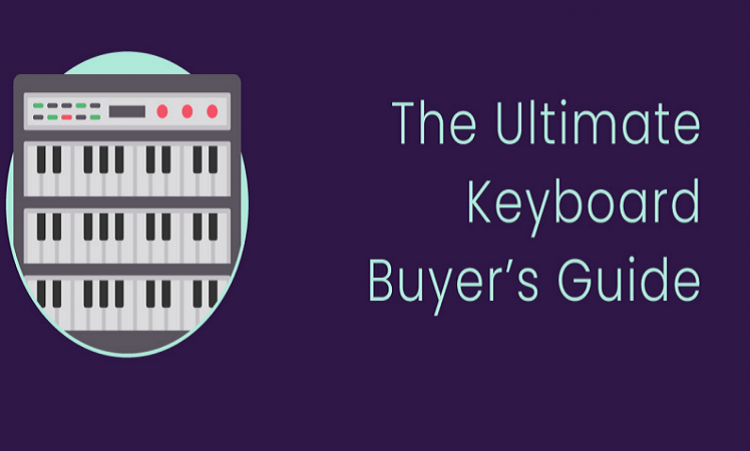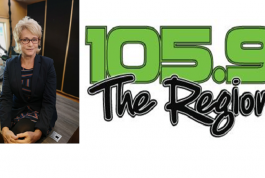.....brought to you by our local Cosmo Music Superstore!
So you have decided to buy your first keyboard. Congrats! In this day and age, there are a plethora of options to choose from regardless of your skill level, style, and music creation needs. However, the flip side of the coin is that there are a plethora of options to choose from! To the uninitiated, or even a seasoned pro, the advent of technology has spawned more choices than ever before and it can be a little daunting when confronted with the selection.
Where to Begin
First and foremost, you must ask yourself "what is my intention behind buying a keyboard?" Is it for learning piano? Casual playing and entertainment? Piano practice/performance? Composing or production? Live band performances with a need for quick navigation? Sound creation (i.e. synths)?
Budget
Once you have locked down the primary role of a keyboard, it is important to ascertain the budget because this will help refine your search by category. Now, more than ever, the gulf between price to features has narrowed dramatically.
Features
After that, you will likely want to look at the key features you are after. For example the number of keys, weighted or non-weighted, number of sounds, onboard recording capabilities, controllers such as programmable knobs/sliders, software/computer integration, ease of interface/navigation, etc. These are all important factors that will lead to an informed purchase, and likely a very satisfying result.

The Lingo - The following are essential terms that will better inform your choice in a particular type and model of keyboard.
Velocity Sensitivity
Also known as Touch Sensitivity, this affects the volume and timbre of the sound based on how soft or hard the keys are played. This is especially important in cases where sampled or "real" instrument tones are concerned since all acoustic instruments naturally have different dynamic levels. For synthesizers, velocity is not as much of a concern since the sound is modified using filters, voltage control oscillators, and modulation (more on that in the synth category). Some entry keyboards will not have touch sensitivity and as such will not be as expressive in their playback. However, they represent the most affordable alternative and would be a good first keyboard for the novice who wants to become familiarized with the keyboard layout and sounds only.
Polyphony
Not to be confused with the traditional term as it relates to the study of counterpoint, polyphony is the total number of notes that can be played simultaneously. For example, a piano is capable of playing 88 notes if someone were to press down on all keys at once (the help of an octopus might be required, however). The more voices offered, the more notes can be sustained, which is especially crucial for digital pianos or workstation keyboards that have multiple layers or tracks. Some keyboards, like synths, can be monophonic, which means they can only play a single note at any time. These tend to be used for searing leads or thumping bass lines.
Multi-Timbral
Many keyboards ranging from arrangers to workstations possess the ability to have different sounds allocated to different MIDI channels (think of them as tracks). This helps when someone wants to build up an entire arrangement using a single keyboard (e.g. piano, bass, drums, sax, guitar, strings, brass, kazoo). Even modest priced models that don't have the recorder built-in are often capable of this feature when connected to a computer using recording software.
MIDI
Short for musical instrument digital interface, this is a form of communication that began in the early '80s to allow keyboards, drum machines, and sequencers to talk with each other. These days, MIDI has been supplanted by a USB alternative but which still functions in the same manner; transmitting note information via a cable from a keyboard to the computer. Almost all keyboards these days sport a USB A port while others will also have the five pin MIDI ports (IN/OUT, and some with a THRU) on their back panel.
Number of Keys
Mini Keyboards come in 25, 32, 37, and 49 keys. Full-sized keyboards offer 25, 37, 49, 61, 73, 76, and even 88 keys. The smaller models are suitable for portability (most of them under 37 keys are controllers) while the larger ones are excellent for piano playing where the expansive range is essential.
Weighted vs Non-Weighted
Most often the weight of the keys will vary between manufacturers. There is no better way to decide which action is for you than coming in and trying them out. For piano playing, 88 full weighted keys are often a must as they will more accurately be able to replicate a real acoustic piano in terms of expression and feel. Additionally, the resistance in the keys will increase musculature/coordination in the fingers that traditional piano exercises help foster. Semi-weighted or spring action keyboards have their advantages, however, especially for quick flurries of virtuosic licks on a synth or simulating fervent staccato string figures for your next symphony.
Speakers vs Audio Outputs
Originally, only home keyboards and arrangers came with built-in speakers and defined the difference between pro and amateur models for decades. Today speakers have migrated over to stage pianos for close monitoring needs. The sound of the speaker will largely be dictated by its size. If home use or small gatherings are the main arenas for your needs, having speakers built into the keyboard can be very handy. If the goal is to rock out with a live band including drums and guitars (they like to play loud!), external amplification will be necessary to be able to compete. Most keyboards have at least one stereo output or more often a pair of left/right ¼" audio outputs to connect to a house PA or keyboard amplifier. The audio outputs are normally unbalanced quarter-inch ports though some more expensive models furnish balanced XLR outputs (like the Dexibell Vivo S7 Pro Digital Piano/Controller)
Sounds
Since the late '80s, the most popularized and common method of sound production has been sampling which effectively takes recordings of real acoustic instruments (like a photograph of their waveform) and makes them playable through looping and programming. This is why a keyboard can sound like brass, woodwinds, percussion, strings, and everything else under the sun. Prior to this, most keyboards used pure synthesis as a means of generating sounds. There are two main types of synthesis; analog and digital. Please see synthesizers for more on those. Most keyboards today come with a variety of sampled instrument tones and electronic sounds, which gives the musician plenty of options in terms of style and approach.
Add-Ons
Stands
When purchasing a keyboard, most people will need a few extra things in order to get up and running. A keyboard stand is often necessary as a place to put the keyboard on, whether at home or on stage. There are various types ranging from wood stands made especially for the home digital piano models, or adjustable/collapsible stands either in the "X" style format (KDS400D) or "Z" stand (Quiklok 716). Many of these stands also have two tier options for those who want a place to hold multiple keyboards.
Pedals
Sustain pedals and controller pedals are also a necessity if you wish to play any sounds and hold the notes once you take your fingers off the key(s). Pedals range from simple square offerings like the M Audio SP1 to more advanced ones like the Yamaha FC4. Control pedals are a different beast altogether. Often referred to as expression pedals, they provide continuous controller messages to the keyboard sound which can allow for swells in dynamics, changes in filters, modulation, or other parameters that can be assigned to this pedal. The Yamaha FC7 or Roland EV-5 would do nicely in this capacity.
Benches
Benches can be another requirement, especially for the digital piano customer who wishes to have a proper seat when playing. Like stands, these come in wood offerings (On-Stage KB8902B) and more portable varieties such as the On-Stage KT7800+.

Arrangers
These keyboards largely occupy the entry-level arena more than any other as their price tag can begin at a modest $150 and move up from there. All of these keyboards come in 61 keys (the standard since the '70s), but some lack velocity sensitivity. The allure of arranger keyboards is that they are feature packed with the ability to have a backing band at your fingertips. Most keyboards in this class sports hundreds of sounds, a plethora of rhythm accompaniment, a variety of music styles (including pop, rock, jazz, country, classical & world), basic two track recorders, backlit LCD display, and some educational support (displays that show note and chord names).
Entry-Level
Some great offerings in the entry-level arena ($180 to $300) would be the Casio CT-300 Yamaha PSRE373. Both keyboards have touch-sensitive keyboards, tons of sounds, and are easy to move around (very lightweight). A slight jump up In the mid-low price range $400-600, would feature models like the Yamaha PSRE463 or Casio CTX line that boast bigger speakers and more styles.
Mid-Range
The mid-range and upper range arrangers are a significant step up in all areas including ultra-realistic sounds, advanced style accompaniment (more interactive, and user-programmable), touch screen interfaces, pristine speaker sound quality, superior key feel and more options. The Korg PA700 and the Yamaha S975 are excellent, robust entries in the $2500-$3000 range.
Upper-Range
The upper range titans include the Korg PA4x and Yamaha Genos. Both offer stunning realism and expressive sounds, an open-ended user interface, 16 track multitrack recorders, and audio recording (e.g. plugging in a vocal mic or guitar to record alongside the built-in sounds). These are the Rolls Royces of the arranger category.
Controllers
Since the advent of affordable computers, music-making has dramatically changed from hardware sound generation to virtual sounds as computers have more power and memory to accommodate vast amounts of sounds. This is where keyboard controllers come in. While they do not make any sound of their own, they are furnished with a plethora of knobs, drum pads, sliders, buttons, pitch and mod wheel, in order to achieve the most expression from these virtual sounds. Since these boards do not emit any sound, they are bundled with both lite versions of professional DAWs (digital audio workstation) software as well as some virtual libraries.
Entry-Level
Some excellent portable entry-level controllers are the Akai MPK Mini and the Arturia MicroLab both of which sport 25 velocity-sensitive mini-keys and come in a variety of colours.
Mid-Range
Moving up the chain to full-sized keys, you couldn't go wrong with the M-Audio Keystation 61Mk3 or Novation Launchkey 49 (designed to work seamlessly with Ableton Live software).
Upper-Range
If your needs lean towards a greater keyboard range, the Native Instruments Komplete Kontrol S88mk2 and Roland A88mk2 feature 88 fully weighted keys. The S88mk2 has two displays that work flawlessly with Native Instruments' Komplete Kontrol software, making it a snap to sort through the plethora of sounds from their Komplete bundle encompasses.
Workstations
Though music-making has largely turned toward computers, there are those instances where a stand-alone keyboard might be a better solution, especially in the case of live performance. Modern keyboard workstations possess all the attributes necessary for building complex, full arrangements. Unlike keyboard arrangers, however, they do not have styles or rhythm accompaniment but rather the tools to create completely original music from the ground up.
By virtue of their designation, these types of keyboards don't have an entry class to speak of. Most occupy the mid $1000s starting with the Yamaha MODX6, the Roland FA-06, and Korg Krome 61. Each sports 61 velocity-sensitive keys, a boatload of sounds for all stylistic requirements, 16 track recorders and more. The Yamaha and Korg additional have touch screen interfaces that make navigation much easier. The higher-end workstations include the Korg Kronos 2, Roland Fantom, and Yamaha Montage all of which come in 61 synth weighted varieties, 73 and 88 full weighted formats.
Synthesizers
Before the advent of sampling, keyboards used synthesis as a means of sound generation. The two main types are analog and digital. Analog synthesis achieves its sound through subtractive means, using high pass and low pass filters, basic waveforms (sine, square, saw), oscillators, ADSR, and modulation. Think of subtractive as sculpting. You begin with a mass of clay and take away the excess to create definition. There has been a huge resurgence in this type of sound as witnessed in the hit Netflix show "Stranger Things" which exploits these terrific timbres to evoke mystery, danger, and otherworldly creatures. Models range from simple monophonic models such as the Arturia MicroBrute all the way up to the colossal Moog One.
Digital synthesis uses more advanced waveforms as the building blocks and as a result, can achieve much more complex timbres. It also has a greater range of types than analog, including frequency modulation (FM) (found in the Yamaha Reface DX), AWM, additive synthesis, and LA synthesis, vector synthesis, and physical modelling (found in the sounds bundled with the remarkable Roli Seaboard.
Digital Pianos
This segment comes in three categories: home intro, home console, and stage pianos.
Home Intro
The introductory models can range from semi-weighted keys from 61 (Yamaha NP12 or Roland GoPiano) through to the full weighted 88 key offerings (Roland FP30, Casio Privia PXS1000, and Yamaha P125). This class sports stereo speakers, a few sounds including acoustic piano, electric piano, strings, organ, bass, and a couple of synth tones. They are reasonably portable and have a small footprint. Some even include basic recorders to capture your improvisations should the inspiration strike!
Home Console
Console digital pianos differ in that they are much larger, have a bigger footprint and resemble a real acoustic piano more. They benefit from including triple pedals and benches as well. Models such as the Yamaha Clavinova line boast larger speakers that also provide a more accurate acoustic effect due to their placement under the piano rather than the smaller digital pianos where the speakers fire up. Models in this segment possess superior keyboard action and sound quality but once again has a limited sound selection as their primary function is that of a piano. For those wanting to play with back-up, the Yamaha CVP and Casio AP series are good solutions as they have the same advanced features found in the arranger keyboards. More sounds, a bevvy of styles/genres, and an entire range of stunning sounds from all over the world! The only limitation is your imagination!
Stage Pianos
The last iteration of the digital piano is the stage piano. These eschew built-in speakers but are often built with road travel/gigging in mind, hence many sport metal bodies that can take the constant wear of moving around. Stage pianos also have more selection of sounds but no built-in rhythms or accompaniment as they are intended to function as part of a live group, or be performed as a solo instrument. Some excellent offerings are the Roland RD88 (which actually does have speakers!), the Yamaha CP88, the Dexibell Vivo S9 (with motorized faders, perfect for using as drawbars for organ sounds!) and the Nord Stage 3 88.
While this blog has just scratched the surface in the field of keyboards, we hope to have given you the knowledge and tools to dive right into this wonderful world. Ideally, we invite you to visit our store where we have these items on display and ready to play. Additionally, we have a knowledgeable passionate sales team who would be happy to answer all questions you might have.
Check out this blog on the Cosmo Music web page to uncover the links to all these keyboards Cosmo Music - The Ultimate Keyboard Buyer's Guide
Happy playing!
The Cosmo Team









